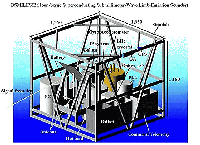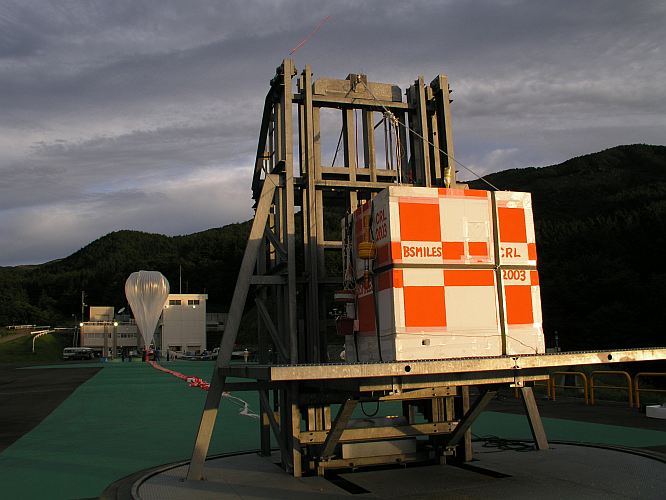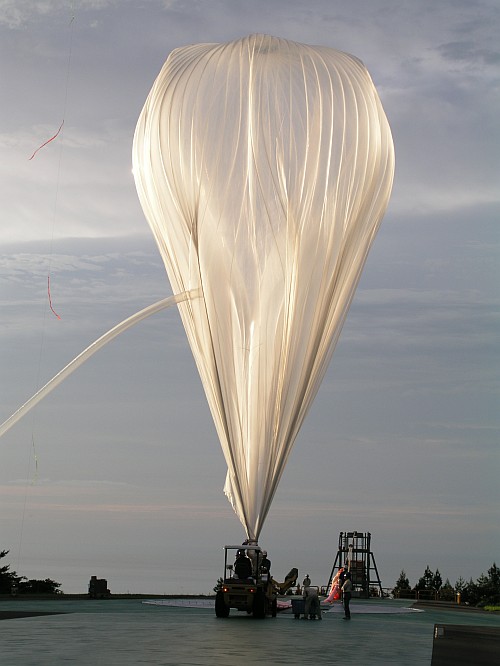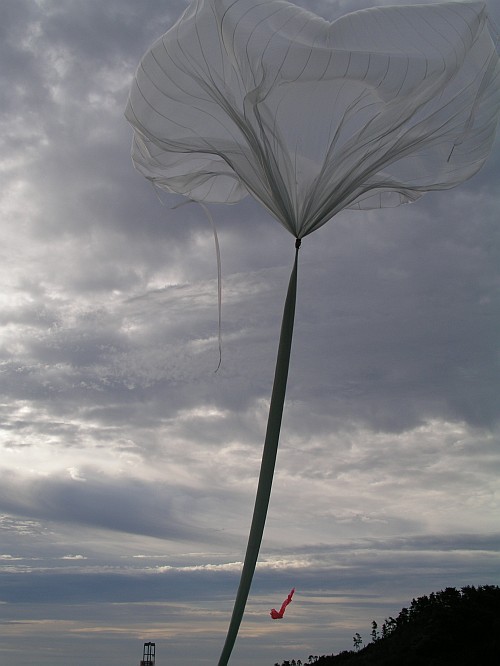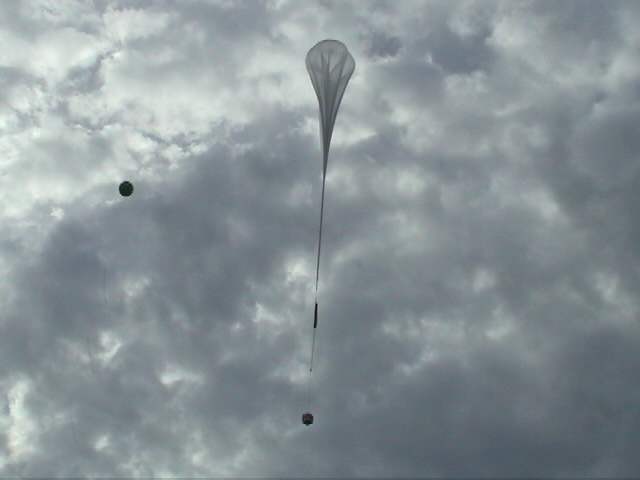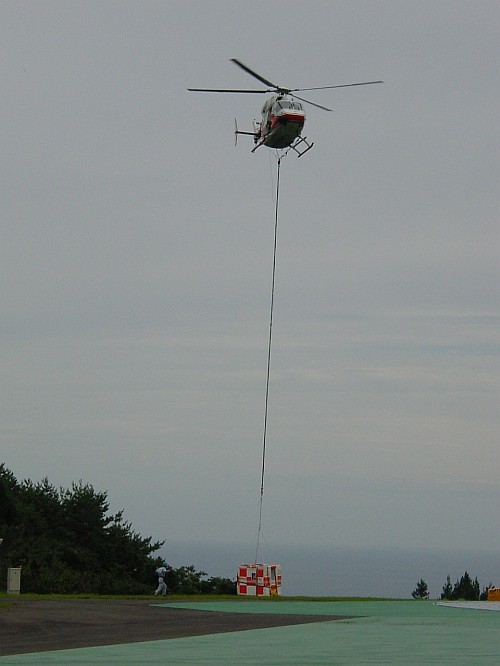Purpose of the flight and payload description
The instrument was designed to observe stratospheric ozone and another minor constituents which will play important role for ozone depletion.
Emission line spectra from these species in the submillimeter-wave range is observed by using low noise superconducting receiver (SIS: Superconductor-Insulator-Superconductor mixer).
BSMILES observes stratospheric molecules in the altitude range from 10 to 35 km with the vertical resolution of about 1 km and data accuracy of 10%.
In this first flight 2.7 hours after the launching, the limb observations were made during 3 hours in the altitude from 31 to 34km.
After the flight the data was analized and was found that emission line spectra of Ozone and Chlorine monoxide has been detected.
Details of the balloon flight
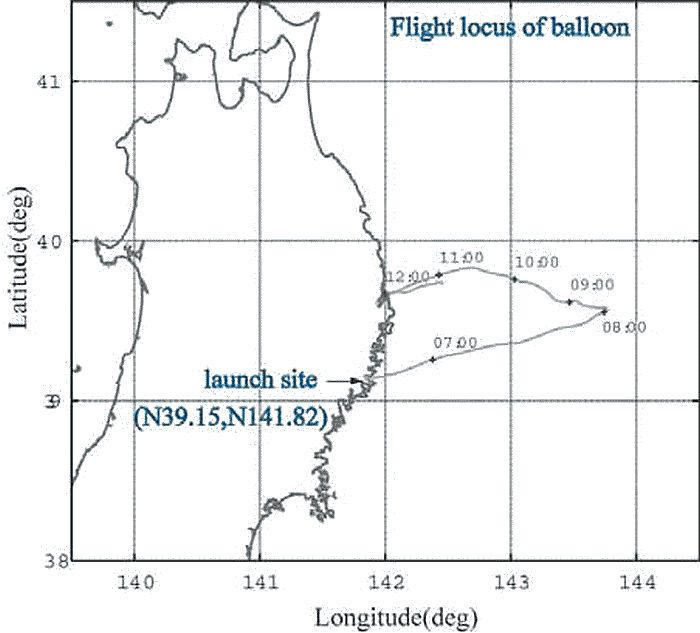
Balloon launched on: 8/30/2003 at 6:22 jst
Launch site: Sanriku Balloon Center, Iwate, Japan
Balloon launched by: Institute of Space and Astronautical Science (ISAS)
Balloon manufacturer/size/composition: Zero Pressure Balloon model B80 80.000 m3
Flight identification number: B80-9
End of flight (L for landing time, W for last contact, otherwise termination time): 8/30/2003 at 12:00 jst
Balloon flight duration (F: time at float only, otherwise total flight time in d:days / h:hours or m:minutes - ): 6 h 13 m
Landing site: In the sea 40 km off the E coast of Miyako, Japan
Payload weight: 490 kgs
The launch took place using vertical inflation technique at 6:22 on August 30th,
After a smooth launch headed east and at 145km from coast leveled at floating altitude of 33.8km.
After that it advanced due west approximately by 3 hours when were performed the scientific observations.
When reaching Miyako bay sky, the observation equipment was separated from the balloon by a command signal from the ground, and landed by parachute in the sea approximately 40km east of the coast.
The instrument and the balloon were collected safely by the recovery ship, technicians extracted the on-board PC where the observation data is recorded and the helicopter elevated the payload from sea and take it back to the Sanriku Ballooning Center.
External references
- Baloon SMILES at National Institute of Information and Communications Technology website
- BSMILES - A Balloon-Borne Superconducting Submillimeter-Wave Limb-Emission Sounder Journal of the National Institute of Information and Communications Technology Vol.54 Nos.1/2
- Information on the balloon flights performed during 2003 (In Japanese) ISAS Annual Report, 2003
1891If you consider this website interesting or useful, you can help me to keep it up and running with a small donation to cover the operational costs. Just the equivalent of the price of a cup of coffee helps a lot.

